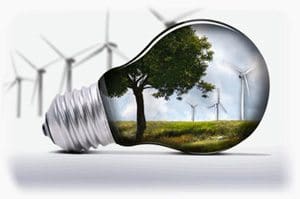 While few people disagree that renewable energy is a good idea, most also recognize there are two practical barriers to implementation on a wide scale.
While few people disagree that renewable energy is a good idea, most also recognize there are two practical barriers to implementation on a wide scale.
First, all renewable energy sources, except for hydro-electric power, cost from two to five times what fossil fuel and nuclear energy costs, even when their “free” fuel costs are factored into the analysis. Many, first-world countries could afford the higher cost, thus decreasing their emissions and fossil fuel use at some slight reduction in spending on other items. But lowcost power is essential to the industrial processes that provide the basis for the world economy, not just that of rich nations.
And among the first “other items” for which spending would be reduced would no doubt be charity and aid given to developing nations. In addition, those third-world countries cannot improve their standards of living unless plentiful, cheap power is available in growing amounts.
As a result, while renewable energy costs will likely continue to decrease at a slow pace as technology improves, only cost competitiveness will bring about big changes and thus widespread usage.
Site requirements
Second, all renewable energy sources have some type of special site requirements that make them suitable for only some parts of the world and some locations. Many renewable methods, such as hydro, geothermal, and wind, can be used only at a relatively small number of locations, where the water, geological, or wind energy can be found.
The power must be generated there, regardless of where it will ultimately be used. Considerable land must then be cleared and devoted to high-voltage transmission lines to get the power to where it is consumed – creating another type of significant environmental impact.

Even solar power has only regional applicability. While theoretically, solar thermal and photovoltaic power will work anywhere, both are practical only in locations where the sun shines a good portion of the day. Near the equator, solar thermal power plants receive nearly 12 useful hours of sunlight daily. But beyond 50 degrees latitude north or south, there are many days of the year when there is simply not enough daylight, leaving energy consumers in need of spending more on some other “backup” supply for those times.
Similarly, biomass plants work only in areas where there is a long growing season. Year-round growing seasons are best, of course, although biomass can also work where the added cost of considerable fuel storage for cut grass and timber is feasible.











Certainly practical.
Commercial Aspects
In oil rich countries it is true that renewable electric price at present are way above the commercial fossil fuel generated electricity , ~5-6 times causing to slow down (but not stopped) its market growth but its only the beginning. It’s strongly predicted that with the improved technology solar and wind generation would be brought back at par with the utility market price but here’s the question “Are the hydrocarbon reserves unlimited” Or are all non oil producing countries (especially the third world nations) getting the same low cost generation advantage. No is the striking answer to both and the fact that the depleting reserves and sky rocketing price are causing huge burden on import budget have already rung an alarming bell probing to look for alternate resources.
For the high cost issue we should not forget that in the last quarter of 20th century when computer industry gained the boon it too was not in the reach of common man. It’s the improvement in technology that did the trick making personnel computer today a house hold item. Similarly with the technology evolution along with renewable generation the idea of smart grid is rapidly gaining popularity. Smart grid will not only enable end user to participate in demand response by giving them partial or total control of load and generation but also introduces feed in terrif which allows the residential sector to install solar PV technology and paying a premium price for the electricity their PV system generated.
CO2 emission:
A very hot issue in the today’s world is global warming of which CO2 is the prime contributor. Being a large by product of all thermal generations CO2 is polluting the environment on daily basis. The increase in carbon foot print particularly over the Middle East have already triggered the need to invest in carbon capture technologies and to be fair this expense should also be considered in pricing the unit of thermal generation whereas any all renewable source are inherently atmosphere friendly making them first choice for clean and quality environment.
Yes, renewable energy resources are practical. The same questions and doubts where raised when the telegraph was invented and the need for wire stung city to city was required. The same when electricity required power lines, cars invented required interstate highway be built, the phone, etc. etc. All initially required more cost to individuals up front and projects too big for any one individual or company to handle. Society collectively had to take on the project via their taxes and Government. But the change came about anyway making the world a better place to live and peoples lives more rich.
The key to this happening with renewable energy is to improve existing technology and a ‘all renewable energy development’ approach. we have grown to do both very well. Specifically power/battery size has to get smaller and smaller, just like we have done with electronics. Second all the energy consumption devices need to get more and more efficient, just like we did with appliances, and producing the first electric cars available to consumers. The “all renewable energy development” also has to include a smart grid and other approaches like the power grid being in the sky above us, beaming down energy (be it solar or other).
First we will see one country’s Government/people step up to plate (I hope it is the USA:>), then other countries will follow. Market demand will help drive the renewable energy cost down to a point it is affordable, so keep demanding it. :>)